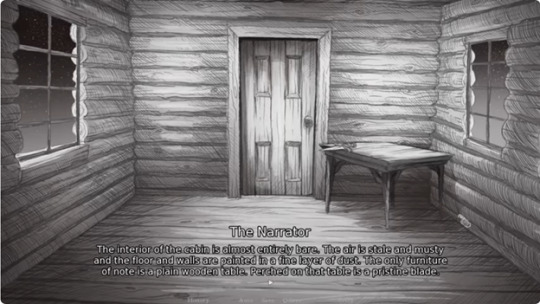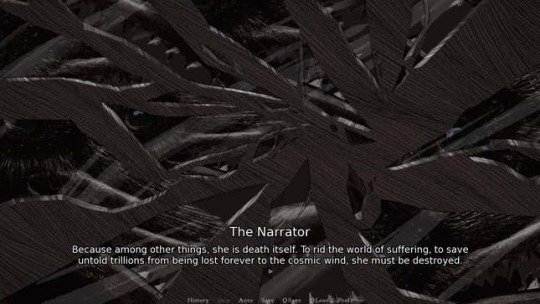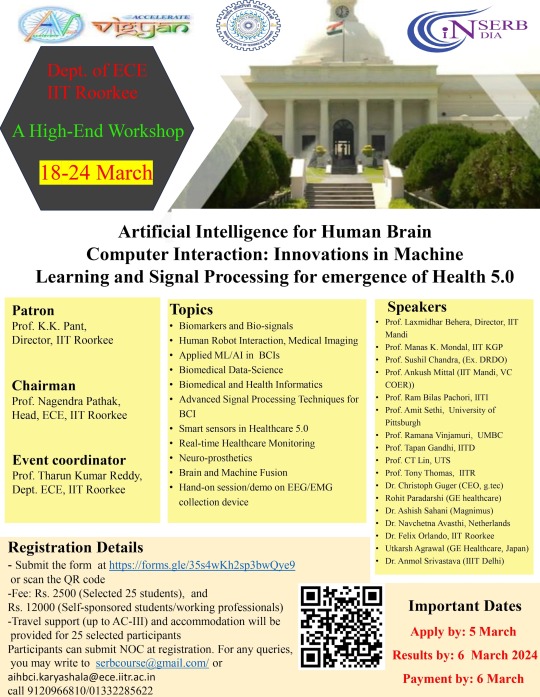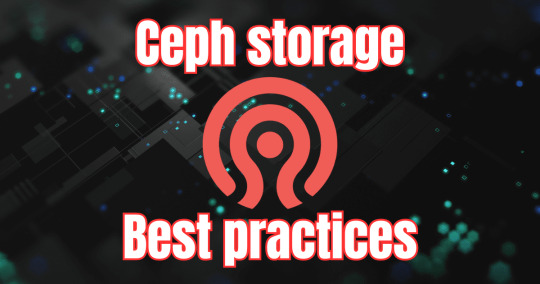#hci
Text
Heroes, Gods, and the Invisible Narrator

Slay the Princess as a Framework for the Cyclical Reproduction of Colonialist Narratives in Data Science & Technology
An Essay by FireflySummers
All images are captioned.
Content Warnings: Body Horror, Discussion of Racism and Colonialism
Spoilers for Slay the Princess (2023) by @abby-howard and Black Tabby Games.
If you enjoy this article, consider reading my guide to arguing against the use of AI image generators or the academic article it's based on.

Introduction: The Hero and the Princess
You're on a path in the woods, and at the end of that path is a cabin. And in the basement of that cabin is a Princess.
You're here to slay her.
If you don't, it will be the end of the world.

Slay the Princess is a 2023 indie horror game by Abby Howard and published through Black Tabby Games, with voice talent by Jonathan Sims (yes, that one) and Nichole Goodnight.
The game starts with you dropped without context in the middle of the woods. But that’s alright. The Narrator is here to guide you. You are the hero, you have your weapon, and you have a monster to slay.


From there, it's the player's choice exactly how to proceed--whether that be listening to the voice of the narrator, or attempting to subvert him. You can kill her as instructed, or sit and chat, or even free her from her chains.
It doesn't matter.
Regardless of whether you are successful in your goal, you will inevitably (and often quite violently) die.
And then...
You are once again on a path in the woods.
The cycle repeats itself, the narrator seemingly none the wiser. But the woods are different, and so is the cabin. You're different, and worse... so is she.
Based on your actions in the previous loop, the princess has... changed. Distorted.



Had you attempted a daring rescue, she is now a damsel--sweet and submissive and already fallen in love with you.
Had you previously betrayed her, she has warped into something malicious and sinister, ready to repay your kindness in full.
But once again, it doesn't matter.
Because the no matter what you choose, no matter how the world around you contorts under the weight of repeated loops, it will always be you and the princess.


Why? Because that’s how the story goes.
So says the narrator.
So now that we've got that out of the way, let's talk about data.

Chapter I: Echoes and Shattered Mirrors
The problem with "data" is that we don't really think too much about it anymore. Or, at least, we think about it in the same abstract way we think about "a billion people." It's gotten so big, so seemingly impersonal that it's easy to forget that contemporary concept of "data" in the west is a phenomenon only a couple centuries old [1].
This modern conception of the word describes the ways that we translate the world into words and numbers that can then be categorized and analyzed. As such, data has a lot of practical uses, whether that be putting a rover on mars or tracking the outbreak of a viral contagion. However, this functionality makes it all too easy to overlook the fact that data itself is not neutral. It is gathered by people, sorted into categories designed by people, and interpreted by people. At every step, there are people involved, such that contemporary technology is embedded with systemic injustices, and not always by accident.
The reproduction of systems of oppression are most obvious from the margins. In his 2019 article As If, Ramon Amaro describes the Aspire Mirror (2016): a speculative design project by by Joy Buolamwini that contended with the fact that the standard facial recognition algorithm library had been trained almost exclusively on white faces. The simplest solution was to artificially lighten darker skin-tones for the algorithm to recognize, which Amaro uses to illustrate the way that technology is developed with an assumption of whiteness [2].
This observation applies across other intersections as well, such as trans identity [3], which has been colloquially dubbed "The Misgendering Machine" [4] for its insistence on classifying people into a strict gender binary based only on physical appearance.



This has also popped up in my own research, brought to my attention by the artist @b4kuch1n who has spoken at length with me about the connection between their Vietnamese heritage and the clothing they design in their illustrative work [5]. They call out AI image generators for reinforcing colonialism by stripping art with significant personal and cultural meaning of their context and history, using them to produce a poor facsimile to sell to the highest bidder.
All this describes an iterative cycle which defines normalcy through a white, western lens, with a limited range of acceptable diversity. Within this cycle, AI feeds on data gathered under colonialist ideology, then producing an artifact that reinforces existing systemic bias. When this data is, in turn, once again fed to the machine, that bias becomes all the more severe, and the range of acceptability narrower [2, 6].

Luciana Parisi and Denise Ferreira da Silva touch on a similar point in their article Black Feminist Tools, Critique, and Techno-poethics but on a much broader scale. They call up the Greek myth of Prometheus, who was punished by the gods for his hubris for stealing fire to give to humanity. Parisi and Ferreira da Silva point to how this, and other parts of the “Western Cosmology” map to humanity’s relationship with technology [7].
However, while this story seems to celebrate the technological advancement of humanity, there are darker colonialist undertones. It frames the world in terms of the gods and man, the oppressor and the oppressed; but it provides no other way of being. So instead the story repeats itself, with so-called progress an inextricable part of these two classes of being. This doesn’t bode well for visions of the future, then–because surely, eventually, the oppressed will one day be the machines [7, 8].
It’s… depressing. But it’s only really true, if you assume that that’s the only way the story could go.
“Stories don't care who takes part in them. All that matters is that the story gets told, that the story repeats. Or, if you prefer to think of it like this: stories are a parasitical life form, warping lives in the service only of the story itself.”
― Terry Pratchett, Witches Abroad

Chapter II: The Invisible Narrator
So why does the narrator get to call the shots on how a story might go? Who even are they? What do they want? How much power do they actually have?
With the exception of first person writing, a lot of the time the narrator is invisible. This is different from an unreliable narrator. With an unreliable narrator, at some point the audience becomes aware of their presence in order for the story to function as intended. An invisible narrator is never meant to be seen.

In Slay the Princess, the narrator would very much like to be invisible. Instead, he has been dragged out into the light, because you (and the inner voices you pick up along the way), are starting to argue with him. And he doesn’t like it.
Despite his claims that the princess will lie and cheat in order to escape, as the game progresses it’s clear that the narrator is every bit as manipulative–if not moreso, because he actually knows what’s going on. And, if the player tries to diverge from the path that he’s set before them, the correct path, then it rapidly becomes clear that he, at least to start, has the power to force that correct path.
While this is very much a narrative device, the act of calling attention to the narrator is important beyond that context.

The Hero’s Journey is the true monomyth, something to which all stories can be reduced. It doesn’t matter that the author, Joseph Campbell, was a raging misogynist whose framework flattened cultures and stories to fit a western lens [9, 10]. It was used in Star Wars, so clearly it’s a universal framework.



The metaverse will soon replace the real world and crypto is the future of currency! Never mind that the organizations pushing it are suspiciously pyramid shaped. Get on board or be left behind.
Generative AI is pushed as the next big thing. The harms it inflicts on creatives and the harmful stereotypes it perpetuates are just bugs in the system. Never mind that the evangelists for this technology speak over the concerns of marginalized people [5]. That’s a skill issue, you gotta keep up.
Computers will eventually, likely soon, advance so far as to replace humans altogether. The robot uprising is on the horizon [8].
Who perpetuates these stories? What do they have to gain?
Why is the only story for the future replications of unjust systems of power? Why must the hero always slay the monster?
Because so says the narrator. And so long as they are invisible, it is simple to assume that this is simply the way things are.

Chapter III: The End...?
This is the part where Slay the Princess starts feeling like a stretch, but I’ve already killed the horse so I might as well beat it until the end too.
Because what is the end result here?
According to the game… collapse. A recursive story whose biases narrow the scope of each iteration ultimately collapses in on itself. The princess becomes so sharp that she is nothing but blades to eviscerate you. The princess becomes so perfect a damsel that she is a caricature of the trope. The story whittles itself away to nothing. And then the cycle begins anew.

There’s no climactic final battle with the narrator. He created this box, set things in motion, but he is beyond the player’s reach to confront directly. The only way out is to become aware of the box itself, and the agenda of the narrator. It requires acknowledgement of the artificiality of the roles thrust upon you and the Princess, the false dichotomy of hero or villain.
Slay the Princess doesn’t actually provide an answer to what lies outside of the box, merely acknowledges it as a limit that can be overcome.

With regards to the less fanciful narratives that comprise our day-to-day lives, it’s difficult to see the boxes and dichotomies we’ve been forced into, let alone what might be beyond them. But if the limit placed is that there are no stories that can exist outside of capitalism, outside of colonialism, outside of rigid hierarchies and oppressive structures, then that limit can be broken [12].

Denouement: Doomed by the Narrative
Video games are an interesting artistic medium, due to their inherent interactivity. The commonly accepted mechanics of the medium, such as flavor text that provides in-game information and commentary, are an excellent example of an invisible narrator. Branching dialogue trees and multiple endings can help obscure this further, giving the player a sense of genuine agency… which provides an interesting opportunity to drag an invisible narrator into the light.
There are a number of games that have explored the power differential between the narrator and the player (The Stanley Parable, Little Misfortune, Undertale, Buddy.io, OneShot, etc…)
However, Slay the Princess works well here because it not only emphasizes the artificial limitations that the narrator sets on a story, but the way that these stories recursively loop in on themselves, reinforcing the fears and biases of previous iterations.
Critical data theory probably had nothing to do with the game’s development (Abby Howard if you're reading this, lmk). However, it works as a surprisingly cohesive framework for illustrating the ways that we can become ensnared by a narrative, and the importance of knowing who, exactly, is narrating the story. Although it is difficult or impossible to conceptualize what might exist beyond the artificial limits placed by even a well-intentioned narrator, calling attention to them and the box they’ve constructed is the first step in breaking out of this cycle.
“You can't go around building a better world for people. Only people can build a better world for people. Otherwise it's just a cage.”
― Terry Pratchett, Witches Abroad

Epilogue
If you've read this far, thank you for your time! This was an adaptation of my final presentation for a Critical Data Studies course. Truthfully, this course posed quite a challenge--I found the readings of philosophers such as Kant, Adorno, Foucault, etc... difficult to parse. More contemporary scholars were significantly more accessible. My only hope is that I haven't gravely misinterpreted the scholars and researchers whose work inspired this piece.
I honestly feel like this might have worked best as a video essay, but I don't know how to do those, and don't have the time to learn or the money to outsource.
Slay the Princess is available for purchase now on Steam.
Screencaps from ManBadassHero Let's Plays: [Part 1] [Part 2] [Part 3] [Part 4] [Part 5] [Part 6]
Post Dividers by @cafekitsune
Citations:
Rosenberg, D. (2018). Data as word. Historical Studies in the Natural Sciences, 48(5), 557-567.
Amaro, Ramon. (2019). As If. e-flux Architecture. Becoming Digital. https://www.e-flux.com/architecture/becoming-digital/248073/as-if/
What Ethical AI Really Means by PhilosophyTube
Keyes, O. (2018). The misgendering machines: Trans/HCI implications of automatic gender recognition. Proceedings of the ACM on human-computer interaction, 2(CSCW), 1-22.
Allred, A.M., Aragon, C. (2023). Art in the Machine: Value Misalignment and AI “Art”. In: Luo, Y. (eds) Cooperative Design, Visualization, and Engineering. CDVE 2023. Lecture Notes in Computer Science, vol 14166. Springer, Cham. https://doi.org/10.1007/978-3-031-43815-8_4
Amaro, R. (2019). Artificial Intelligence: warped, colorful forms and their unclear geometries.
Parisisi, L., Ferreira da Silva, D. Black Feminist Tools, Critique, and Techno-poethics. e-flux. Issue #123. https://www.e-flux.com/journal/123/436929/black-feminist-tools-critique-and-techno-poethics/
AI - Our Shiny New Robot King | Sophie from Mars by Sophie From Mars
Joseph Campbell and the Myth of the Monomyth | Part 1 by Maggie Mae Fish
Joseph Campbell and the N@zis | Part 2 by Maggie Mae Fish
How Barbie Cis-ified the Matrix by Jessie Gender
#slay the princess#stp spoilers#stp#stp princess#abby howard#black tabby games#academics#critical data studies#computer science#technology#hci#my academics#my writing#long post
230 notes
·
View notes
Text
Emerging Tech: The Entropy of Human Expression
While chatting with my TA, whose major is Human-Computer Interaction, she introduced me to a term called the "dark trend." It refers to this:
"While building user interfaces, some designers come up with ways to make a task look easier and efficient, tricking people to choose it while hiding the fallbacks of it."
This conversation started when I mentioned issues regarding how emerging tech is allowing "professionals" to circumvent the fundamentals of craft in creating various forms of art. It's my estimation that we're in the middle of a long trend in many fields where hasty tech advancements are diluting genuine skill-building, and we're even seeing weak television writing due to the clone-of-a-clone effect where the writers are building characters not based on reality, but based on how characters in their favorite shows behave.
Sometimes it seems we're seeing the entropy of human expression.
#art#creativity#entropy#expression#human expression#human condition#hci#ai#artificial intelligence#user interface#ui#craft#writing#screenwriting#television writing
7 notes
·
View notes
Text
Gonna fire this baby up with the following post regarding #CHI2024, #whyCHI, and any other academic conference planning to remain in Hawai'i in this or any other year. May this discomfort lead us to new knowledge and renewed action.
#MauiSolidarity
3 notes
·
View notes
Text

🌟 Unlock Your Creative Potential in UI/UX Design! 🌟
🚀 Discover the perfect blend of art and technology with our cutting-edge E-Learning Platform. Dive into the exciting world of UI/UX design and unleash your creativity! 🎨💡
🌐 Gain comprehensive knowledge through expert-led courses, hands-on projects, and interactive learning modules. Our platform is tailored to empower aspiring designers like you, ensuring you master the latest tools and techniques. 💪✨
🌍 But that's not all! 🌍
💼 With our extensive network of remote job opportunities, you can turn your passion for UI/UX design into a lucrative career! 💼💸
💡 Say goodbye to traditional 9-to-5 jobs and hello to the freedom of working from anywhere. Explore a wide range of remote job options that align with your skills and interests. 🌍✈️
🎯 Don't miss out on this golden opportunity! Join our vibrant community of creative minds and take your design skills to new heights. Start your journey to success today! 🚀🔥
💻 Visit our website now and embark on a transformative learning experience:
#uiux #ui #uidesign #ux #uxdesign #webdesign #design #userinterface #appdesign #uiuxdesign #userexperience #uidesigner #uitrends #webdesigner #dribbble #graphicdesign #uxdesigner #dailyui #interface #website #uiinspiration #designinspiration #uxui #websitedesign #behance #userinterfacedesign #designer #uiuxdesigner #adobexd #uxinspiration
#UIdesign#uxtrends#ui ux design#ui ux company#ux design services#uxdesigncompanyinmumbai#interface#hci#graphicdesign
3 notes
·
View notes
Text


Astera
#my art#oc#original character#illustration#character art#oc art#ocs#oc artwork#digital art#ibis paint x#astera loventine#hci#Spotify
2 notes
·
View notes
Text
If anyone here has done a human computer interaction MS please talk to me about it 🙏
2 notes
·
View notes
Note
What do you study?
i study systems engineering and focus on human/computer interaction
basically, i make sure that the systems people use to help make decisions are actually usable - can the intended user make sense of the system's output or recommendations?
5 notes
·
View notes
Text

Department of ECE, IIT Roorkee is organizing a high-end workshop on "Artificial Intelligence for Human Brain Computer Interaction: Innovations in Machine Learning and Signal Processing for emergence of Health 5.0" under the SERB's Karyashala scheme at IIT Roorkee in the dates March 18-24, 2024.
Would you like to attend?
Apply soon @ https://lnkd.in/dGEX6PW7
Poster contains the details of the list of experts from both Industry and Academia.
#phd#iit#nit#iiit#serb#iitroorkee#ece#cse#datascience#DRDO#AIIMS#gehealthcare#bci#hci#DIPR#INMAS#brainresearch
0 notes
Text
Ceph Storage Best Practices for Ultimate Performance in Proxmox VE
Ceph Storage Best Practices for Ultimate Performance in Proxmox VE #ceph #storage #bestpractices #proxmox #proxmoxve #homelab #homeserver #hci #softwaredefinedstorage #hcistorage #virtualization #virtualmachines #vms #vhtforums #selfhosted
Ceph is a scalable storage solution that is free and open-source. It is a great storage solution when integrated within Proxmox Virtual Environment (VE) clusters that provides reliable and scalable storage for virtual machines, containers, etc. In this post, we will look at Ceph storage best practices for Ceph storage clusters and look at insights from Proxmox VE Ceph configurations with a Ceph…

View On WordPress
#ceph cluster#ceph storage#containers#HCI#home lab#home server#hyper-converged infrastructure#proxmox ve#virtual machines
0 notes
Text
What Jane Austen Taught Me About Running Zoom Meetings
Many of our social interactions happen digital these days, even “face-to-face” ones like Zoom meetings. It’s still just not the same as in-person, whether for meetings, a book club, or just to hang out. There must be a better way to gather digitally. I think a big piece of why digital isn’t working is that we don’t have social norms there.
Social norms are what make a conversation flow smoothly. You see it in how close you stand or sit together, how you take turns, and in the type of space you choose. Basic videoconferencing has none of this: we can’t control distance, audio lags or mutes, and it’s almost always the same black screen of videos from job interviews to birthday parties.
Some tools try to mimic in-person social interactions and norms in digital meeting spaces, kind of like a video game. Each person has an avatar that moves around a digital space and hears nearby conversation. The word for directly recreating things or experiences into digital tools is skeuomorphism. It’s easy for people to learn because it’s just like the other familiar version. But it also can point out the ways that digital just can’t be the same as in-person. Making a videogame-like social event does bring some social norms into that digital conversation, but it also reminds us that we aren’t in person, we can’t shake hands, we look at the whole room like a map instead of from our eyes.
So digital doesn’t work and just mimicking in-person doesn’t make it all intuitively work. So I’m going to look for new social norms.
Actually, I’m going to look for really old ones.
<h3></h3>
Regency era England definitely had well-established social norms. Think Jane Austen’s books, like Pride and Prejudice, or Netflix’s Bridgerton. The middle and upper classes of that time easily knew what to expect from each other and what would be expected of them just from where they were and what was going on, thanks to social rules and etiquette. At least some of these social norms feel overly strict to a modern eye. And this is actually what I was looking for with digital social norms. Computer rules are also very, very strict (eventually it’s all 1s and 0s). They don’t give us wiggle room within the rules. In a lecture, you shouldn’t talk, but you can whisper to the friend next to you. But try whispering in a Zoom meeting while muted. So what can Jane Austen’s social norms give digital meeting spaces? I have 3 ideas to start.
<h3></h3>
1. Being a host is a social job, not tech support
The host of Regency ball had little in common with a Zoom host. On Zoom, hosting is muting and unmuting attendees, managing recording, and placing avatars in different rooms; tech support. Being a Regency host was social, they greeted each person on arrival, introduced them people they should know, and generally showed them what the ball had to offer. And this was before they entered the ball.


I think it would be nice to not just appear in a sea of black squares, not knowing who was there and not knowing if conversation had already started. Imagine a one-on-one greeting between you and an organizer who took you to a small group of peers and introduced you, or brought you to the full group after explaining that people are waiting for the actual book club to start but can join breakout rooms to chat in the meantime.
<h3></h3>
2. Dancing lets us get to know each other and the group

Don’t worry, I am not going to ask you to dance in Zoom. Like I said, I’m not here for skeuomorphism. But a major reason for dancing at balls (you know, besides it was fun) was a chance for two people to chat one-on-one and for the larger community to know who was chatting with who. Everyone saw who was dancing not just by looking at the dance floor, but also by looking at people’s dance cards (which they carried or hung on their wrist) and seeing whose name was written for each dance.

Hybrid teams struggle to get to know each other because they mostly communicate through text or in team meetings with little time for social chatting. Us remote workers miss having a space to just talk, not about work or anything in particular. We could make digital meeting spaces that use voice chat to let pairs of people quickly connect and talk, and use a digital dance card to let the group see who’s been chatting with who.
<h3></h3>
3. Candles set the stage and expectations
Little details at a Regency ball could give important cues to attendees. The length of the candles burning in the rooms would tell people how long the ball was expected to last and that told them what was available at the ball. Short candles? A few hours of dancing and some food. Long candles? Settle in for a long night and look for places to take a break with card games or other amusement.

Digital meetings spaces are entirely missing this. Zoom always looks the same! It doesn’t matter if I’m playing a game with my family or presenting a progress report. The skeuomorphism can help here to bring in the same cues we have in person; make the background a living room for game night or an office for the presentation. But sometimes that just reminds us that we’re not in a living room together and might make the video uncanny. I want digital meeting places to have décor cues that are all their own. Because digital meeting spaces are not just replacements for in person ones. They’re something new and I want us to really explore what we can do with them.

1 note
·
View note
Text
Comparing Nutanix AHV and VMware vSAN: An In-depth Analysis of Hyperconverged Infrastructures

Hyperconverged infrastructure (HCI) has become increasingly popular in recent years as organizations seek to simplify their data center operations and streamline their IT infrastructure. Two prominent players in the HCI market are Nutanix AHV and VMware vSAN. Both offer robust solutions for virtualization and storage, but they have distinct features and capabilities that cater to different needs. In this article, we'll conduct an in-depth analysis of Nutanix AHV and VMware vSAN to help you understand the key differences and determine which solution may be the best fit for your organization.
Nutanix AHV
Nutanix AHV is the native hypervisor built into the Nutanix Enterprise Cloud platform. It is based on the open-source KVM (Kernel-based Virtual Machine) hypervisor and is tightly integrated with Nutanix's software-defined storage and management capabilities.
Features:
Scale-Out Architecture: Nutanix AHV is designed to scale out seamlessly, allowing organizations to add nodes to their cluster as needed without disruption. This makes it well-suited for dynamic and growing environments.
Integrated Management: Nutanix Prism provides a centralized management interface for deploying, monitoring, and managing virtualized infrastructure. It offers features such as one-click upgrades, self-service provisioning, and comprehensive analytics.
Data Efficiency: Nutanix AHV includes features like inline deduplication, compression, and erasure coding to optimize storage efficiency and reduce costs.
High Availability: Nutanix AHV incorporates built-in high availability features to ensure that virtual machines (VMs) remain accessible even in the event of hardware failures.
Enterprise-Grade Security: Nutanix AHV offers granular security controls and encryption features to protect data at rest and in transit.
VMware vSAN
VMware vSAN is a software-defined storage solution that is tightly integrated with VMware's vSphere hypervisor. It aggregates local storage resources from ESXi hosts to create a shared datastore that can be used for virtual machine storage.
Features:
Integration with VMware Ecosystem: VMware vSAN is tightly integrated with VMware's vSphere suite of products, allowing for seamless management and interoperability with other VMware technologies.
Scalability: VMware vSAN can scale up or out to accommodate changing workload demands. It supports both hybrid and all-flash configurations, giving organizations flexibility in their storage choices.
Performance: VMware vSAN leverages SSD caching and distributed RAID to deliver high-performance storage for virtualized workloads. It also supports features like deduplication, compression, and QoS (Quality of Service) to further optimize performance.
Data Services: VMware vSAN includes a range of data services such as thin provisioning, snapshots, and replication for data protection and management.
Robust Ecosystem: VMware vSAN has a large ecosystem of partners and third-party integrations, allowing organizations to extend its capabilities with additional software-defined storage solutions, backup, and disaster recovery solutions.
In-Depth Comparison:
Hypervisor: Nutanix AHV includes its own hypervisor, while VMware vSAN requires VMware's vSphere hypervisor.
Management: Nutanix AHV offers Prism for centralized management, while VMware vSAN integrates with vCenter Server for management.
Scalability: Both solutions are highly scalable, but Nutanix AHV may have an edge in terms of simplicity and ease of scaling.
Integration: VMware vSAN offers tighter integration with the VMware ecosystem, making it a preferred choice for organizations already heavily invested in VMware technologies.
Performance: Both solutions offer high performance, but VMware vSAN's performance may be slightly more customizable and fine-tuned for specific workloads.
Cost: Nutanix AHV may have a more straightforward pricing model, as it typically includes the hypervisor as part of the Nutanix Enterprise Cloud platform. VMware vSAN requires separate licensing for vSphere and vSAN.
Conclusion:
Both Nutanix AHV and VMware vSAN are robust HCI solutions that offer advanced virtualization and storage capabilities. The choice between the two will depend on factors such as existing infrastructure, management preferences, scalability requirements, and budget constraints. Organizations should carefully evaluate their needs and conduct a thorough analysis of each solution before making a decision. Ultimately, both Nutanix AHV and VMware vSAN can provide a solid foundation for building a modern, efficient, and agile data center infrastructure.
1 note
·
View note
Text
sometimes we create a tool that has no use (yet). and so we try to retrofit it into our current practices, but it doesn't always work out - especially in a world driven by neoliberal capitalism where economic capital is the main 'end point' for a lot of interesting inventions. Look at how blockchain slid into being purely crypto.
At the same time, sometimes we invent a tool, and we have plenty of uses for it - but the uses are specialized and require context, and that won't quite meet the kind of capital demands to make that tool "break even". The new XR headset from Apple is one of these - super useful for training welders, or use in art foundries, or potentially any other process that requires an "overlay". The thing is, it could also slide the way of Facebook's "metaverse" - irrelevancy driven by the spectacle of the technology rather than the needs being met.
We hit the point of ubiquitous computing over a decade ago, and now we are trying to push it further, but the spectacle hides the fact that these interfaces do not fit the needs of the practices we're forcing it to conform to. We're creating mismatches by forcing a square peg into a round hole because "seamless" design taught a generation of people that technology can do anything and everything without limits, and it is the user who is limited.
#hci#apple pro vr#design#sorry just working on a phd thing in the background#and i got a bit annoyed when i saw a post being like “whats even the point of these headsets”#PLEASE there is more than one use made obvious by rich idiots trying to retrofit this tech into everyday life
0 notes
Text
Just learned about a new discipline: political theology
0 notes
Text
3Gen Data Systems: Expert Software Development, SSD Caching, Fiber Channel, and Networking Services. Boost your business productivity with our cutting-edge solutions. Trust our experienced team to deliver efficient software development and advanced technology services tailored to your needs. Contact us today for a consultation!
1 note
·
View note


